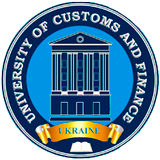THE METHOD OF OPTIMIZING THE ROBOTIC TRANSPORT SYSTEM OF PORT CARGO PROCESSING
Abstract
The article is devoted to the development of a method of structural optimization of the functioning of the transport system of robotic vehicles for the processing of containers and cargo in the port based on the modification of the method of branches and boundaries. The relevance of this article is explained by the fact that about half of the volume of all international transportation is carried out by sea transport, and the efficiency of the operation of port transport systems depends on the productivity of their processing in ports, considering. and customs clearance and direct control. One of the most effective technologies for building such transport systems is the use of robotic vehicles, which ensure the transportation of containers and cargo along technological routes in a continuous mode with the possibility of dynamic scanning and detection of prohibited cargo. Therefore, the development and improvement of optimization methods of robotic transport systems for port cargo handling is an urgent applied problem. The purpose of this article is to develop an algorithm for the structural optimization of the robotic transport system for ensuring the transportation of goods and containers along the technological routes of their port processing based on the modification of the method of branches and boundaries. In accordance with the proposed approach, the cost minimization function for the formation of the structure and functioning of the elements of the transport system is used as an optimization criterion. In the process of searching for the optimal version of the structure of the transport system, the method of branches and boundaries is used, in which the principle of possible options is used to divide the current set of solutions of the problem into branching subsets. For subsets of branching, lower estimates of the values of the objective function of choosing the optimal model are calculated. As a condition for the exclusion of inefficient options and termination of branching for the structural optimization problem, the condition for ensuring the maximum possible productivity of transportation by selected robocars with a lower cost is defined. According to the results of the conducted research, it was found that the developed algorithm allows to determine the optimal structure of the robotic transport system, which, under the condition of its minimum cost, ensures the maximum possible productivity of cargo and container processing in the port. At the same time, the proposed approach allows generalization for the case of building the optimal structure of the transport system with maximum productivity and minimum possible cost.
References
2. Кузьменко К. М. Основні аспекти розвитку транспортного комплексу України за критеріями інтеграції. Розвиток методів управління та господарювання на транспорті. 2021. № 1 (74). С. 52-64.
3. Репіч Т. А., Великий Д. Ю. Оптимізація логістичної інфраструктури міжнародних вантажних перевезень. Ефективна економіка. ДДАЕУ. 2017. № 1. – URL: http://www.economy.nayka.com.ua/?op=1&z=5377.
4. Пасічник А. М. Методологія формування логістичної транспортно-митної інфраструктури в Україні: монографія /за ред. А. М. Пасічника. Дніпропетровськ, УМСФ. 2016. 168 с.
5. Кузьменко А. В. Досвід та закономірності формування світової транспортно-логістичної інфраструктури. Науковий огляд, 2015. № 7(17). С. 5-18.
6. Рудь І. Транзитний морський потенціал України: сучасні реалії та перспективи. Україна: події, факти, коментарі. 2016. № 5. С. 65-71. URL: http://nbuviap.gov.ua/images/ukraine/ 2016/ukr5.pdf.
7. MacNeil A. and Ghosh S. Gender imbalance in the maritime industry: Impediments, initiatives, and recommendations. Australian Journal of Maritime and Ocean Affairs. 2016. 9(1). P. 42-55.
8. Review of Maritime Transport. Report by the UNCTAD. New York and Geneve: UN. 2019. 116 p.
9. Самановская К. А. Перспективи розвитку транзитних мультимодальних контейнерних перевезень вантажів. URL: http://tsi.lv/sites/editor/science/ art1.pdf.
10. Pasichnyk A. Analysis of the condition of transport-customs infrastructure and efficiency of the transit potential of Ukraine. Promoting the European integration processes in the Eastern Partnership countries: national and regional policy instruments: monograph / NAS of Ukraine. SI “Institute of Regional Rsearch”/ ed. by Kh. Prytula and I. Horga. Lviv, 2022. P. 191-214.
11. Land A.H., Doig A.G. An automatic method of solving discrete programming problems. Econometrics. 1960. V. 28. P. 497-520.
12. Мельник І.М., Піднебесна Г.А. Особливості застосування методу гілок і границь для розв’язання задачі вибору оптимальної регресійної моделі. Індуктивне моделювання складних систем. МННЦ ІТС НАН України. Київ, 2012. В. 4. С. 128-135.
13. Мельник І.М. Метод гілок і границь для розв’язання задачі вибору оптимальної регресійної моделі як задачі дискретної оптимізації. Індуктивне моделювання складних систем. МННЦ ІТС НАН України. Київ, 2009. С. 131-139.
14. Крижанівський Б. Використання методу гілок і меж при розв’язанні задач лінійного цілочислового програмування: матеріали науково-технічної конференції «Наука. Освіта. Молодь». УДПУ, 2016. URL: https://library.udpu.edu. ua/library_files/stud_konferenzia/2016_1 /85.pdf
15. Кравченко Є. І. Алгоритм гілок та меж для задачі формування команди та пошуку інвесторів для стартап-проектів. Науковий огляд. НТУ “КПІ ім. І. Сікорського”, 2018. № 6(49). С. 64-72.

 ISSN
ISSN 




